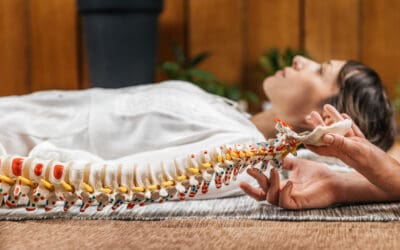Scoliosis, characterized by an abnormal curvature of the spine, can lead to significant discomfort and mobility issues. One potential treatment gaining attention is spinal decompression. This post delves into how spinal decompression may aid those suffering from scoliosis.
Understanding Scoliosis and Its Impact
Scoliosis involves a side-to-side curvature of the spine, typically developing during the rapid growth phase of adolescence. While most cases are mild, severe curvatures can lead to reduced chest space, affecting breathing and overall functionality.
Symptoms of Scoliosis
- Uneven shoulders or waistline
- Visible spinal curve
- Back pain and discomfort
- Difficulty breathing in severe cases
Can Spinal Decompression Help Scoliosis?
Spinal decompression therapy, both surgical and nonsurgical, is increasingly considered for scoliosis management. It involves gently stretching the spine, which can relieve nerve pinching and correct minor spinal abnormalities.
Nonsurgical Spinal Decompression
This therapy is minimally invasive and aims to alleviate pressure on the spinal column. By enhancing the flow of nutrients, fluids, and oxygen, it promotes disc healing and reduces back pain.
- Procedure: Involves the use of a traction table or similar device to stretch the spine gently.
- Benefits: Can relieve pinched nerves, reduce pain, and potentially correct slight spinal curvatures.
Surgical Spinal Decompression
In more severe cases of scoliosis, surgical decompression might be recommended. It involves removing material that’s putting pressure on the spine, offering a more permanent solution.
Complementary Treatments for Scoliosis
In addition to spinal decompression, various treatments can help manage scoliosis:
1. Physical Therapy
- Strength and Flexibility Exercises: Target the muscles supporting the spine.
- Postural Training: Corrects alignment and reduces strain on the spine.
2. Pain Management
- Medication: Over-the-counter pain relievers or prescribed medications.
- Steroid Injections: For temporary relief from inflammation and pain.
3. Lifestyle Adjustments
- Ergonomic Modifications: Reducing spinal strain during daily activities.
- Regular Exercise: Maintaining a healthy spine through low-impact activities.
When to Consider Spinal Decompression
Spinal decompression is typically considered when:
- Noninvasive therapies haven’t provided sufficient relief.
- The curvature of the spine is causing significant pain or functional limitations.
- Pinched nerves are leading to pain or numbness.
The Role of Chiropractic Care in Managing Scoliosis
Chiropractic treatments, including spinal decompression, offer a holistic approach to managing scoliosis. They focus on improving spinal alignment, enhancing mobility, and alleviating pain without invasive procedures.
Broadway Chiropractic and Wellness: Your Ally in Scoliosis Management
At Broadway Chiropractic and Wellness, we specialize in providing comprehensive care for scoliosis patients, including spinal decompression therapy.
Personalized Treatment Plans
Our experienced chiropractors develop personalized treatment plans that include:
- Spinal Decompression: Tailored to individual scoliosis conditions.
- Supportive Therapies: Combining physical therapy, exercise, and lifestyle advice for holistic care.
State-of-the-Art Facilities
Equipped with the latest technology in spinal decompression and chiropractic care, we offer effective treatments in a comfortable setting.
Committed to Your Well-being
Our goal is to help you manage your scoliosis effectively, reducing pain and improving your quality of life.
In conclusion, spinal decompression presents a promising option for managing scoliosis, offering relief from pain and improving spinal alignment. Along with complementary therapies, it can form part of a holistic approach to treating this complex condition. At Broadway Chiropractic and Wellness, we are dedicated to providing the best care and support for our scoliosis patients.




